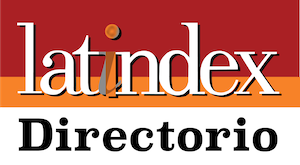Design of an Efficient Oven based on the use of plant biomass: an alternative for the Pichaló neighborhood of the city of Latacunga
Abstract
In the present work, a theoretical and experimental study of the energy potential of eucalyptus in the Pichaló neighborhood is carried out, with the objective that it be well used in the residents' food cooking ovens, proposing an efficient alternative with a simulated design and reducing thus environmental pollution. The bibliographic review highlights the scope of the work carried out in terms of methodologies for obtaining caloric power and relationships with other characteristics of wood species used as a source of energy in rural areas of Latacunga, reflecting technical-economic data useful for the efficient oven proposal. The starting point is the experimental study, where the characterization is made regarding the behavior with the amount of oxygen supplied for combustion and the humidity of the eucalyptus, from there procedures are carried out for the evaluation and rationalization of the plant biomass in the Pichaló neighborhood, with the purpose of contributing to solutions related to the negative environmental impact and human health, the most significant incidents of energy losses are analyzed through the simulation of an efficient oven in the ANSYS program, where materials are involved. recyclable in combination with different thicknesses of rock wool as selected insulation, obtaining the appropriate mass of eucalyptus as fuel in homes that have ovens, reducing the social and environmental impacts of the area through research.
Downloads
References
(1) Acosta, “Tecnología de la madera de eucaliptos colorados. Santiago del Estero,” I Jornadas Forestales de Santiago del Estero, 2005.
(2) Aristizabal, “Corredor de Conservación de Robles, una Estrategia para la Conservación y el Manejo Forestal en Colombia,” Fundación Natura Subdirección de Conservación e Investigación, 2008.
(3) Corzo, “Representación por volumen finito de un horno de cocción de ladrillos,” Instituto Tecnológico de Celaya, 2012.
(4) González, “Metodología de la investigación científica para las ciencias técnicas,” Matanzas, 2003.
(5) Parra, “Cuerpo Académico de recursos naturales y sustentabilidad,” Bioenergía. México, 2012.
(6) Smid, “El ABC de la cocina diaria,” Argentina: Gárgola, 2008.
(7) Tiwari, “GSolar energy. Fundamentals, desing, modelling and aplications. India: Alpha Science International,” 2002.
(8) Toscano “Biomasa,” Guayaquil, 2009.
(9) Uceda, M. determinación de 20 especies forestales de la amazonia peruana. 1 -15. (2011).
(10) Wikipedia. Recuperado el 16 de junio de 2013, de http://arbolespain.blogspot.com/2010/10/eucalyptus-globulus-labill-eucalipto.html, 2010.
(11) Zamora, “Cocinas Eficientes una Alternativa Energética y Ecológica para la Cocción de Alimentos. Granma - Cuba: Centro de Estudios de Energía y Medio Ambiente,” Universidad de Cienfuegos, 2010.
Copyright (c) 2018 Ciencias de la Ingeniería y Aplicadas

This work is licensed under a Creative Commons Attribution-NonCommercial-NoDerivatives 4.0 International License.
The authors who publish in this journal agree to the following terms:
- Creative Commons Attribution-NonCommercial-NoDerivatives License allows others to share the work with acknowledgment of authorship of the work and initial publication in this journal.
- Authors may separately establish additional agreements for the non-exclusive distribution of the version of the work published in the journal (for example, placing it in an institutional repository or publishing it in a book), with an acknowledgment of its initial publication in this journal.
- Authors are permitted and encouraged to disseminate their work electronically (for example, in institutional repositories or on their own website) before and during the submission process, as it can lead to productive exchanges, as well as further citation. earliest and largest of published works (See The Effect of Open Access) (in English).











